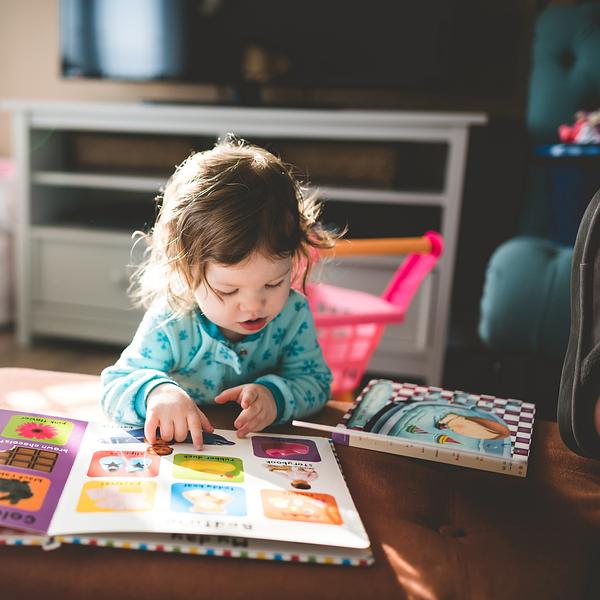
2021-10-29
Young children only learn written language at school, right? Not really. Children’s first print experience at home matters...
Article on language acquisition in multilingual families written by Valérie Kemp, a doctoral student at the University of Luxembourg and the Universität Hamburg and a member of Bilingualism Matters@Luxembourg.
As adults, we are used to reading and writing in many different situations of our lives. We tend to forget how we learned to use written language. Was it really only at school? Didn’t our parents and our experiences at home play an important role as well?
If you pay attention, you will notice how frequently children encounter written language in everyday life situations. For us adults, letter-shaped magnets on the fridge or a newspaper lying on the table might be ordinary things. But for children, they can be the gateway to a new and fascinating world of possibilities.
As a former teacher, I want to know what teachers can learn from parents. As a future researcher, I know about the importance of reading and writing for language learning and school success. And as a bookworm, I am simply fascinated to see how children become young readers and writers. But children don’t only learn how to use written language through books. It is about much more than that!
Let me introduce you to Amy, Liam, Matthew and Sonia, a young family living in Luxembourg. Luxembourg is a small country in the heart of Europe, where people of over 170 different nationalities live together. It has three official languages: Luxembourgish, French, and German. But many more languages are spoken in everyday life. Amy (who is half Luxembourgish and half Danish) and Liam (who is French) and their two children Matthew and Sonia, are a perfect example of the multilingual and multicultural population of Luxembourg.
So, what do the children’s experiences with written language in this family look like? Apart from the daily ritual of reading a bedtime story together, it plays a role in many other ways. When entering the family’s apartment, you immediately notice the names of the children on the bedroom doors, spelt in colourful wooden letters. The walls in the living room are full of bookshelves and drawings or scribbles of Sonia and Matthew. When children see letters or words in their surroundings, they become curious to learn how to use them themselves.
Five-year-old Sonia is drawing a picture for her brother on a magnetic board. She starts to wonder how to write “Matthew” next to her drawing and asks her mother, Amy about it. Amy wants to show her, but Sonia has a better idea. She gets up to check the wooden letters on Matthew’s bedroom door and tries to copy them. Although Sonia was never taught about this, she knew what they meant and how she could use them to write down Matthew’s name.
Amy and Liam do not teach their children about written language. But through little things like this – and many others– they create an authentic learning environment for their children. By being attentive and reacting to their natural curiosity and interests, they have paved the way for their children to become passionate readers and to succeed in a literate society.
* * *
Further reading